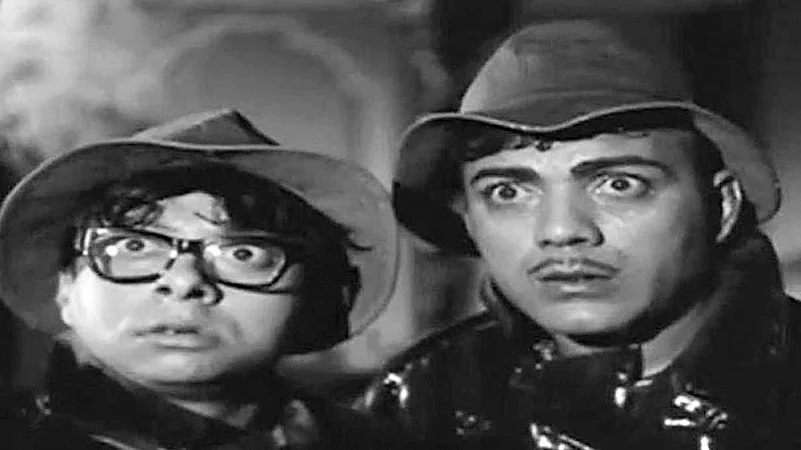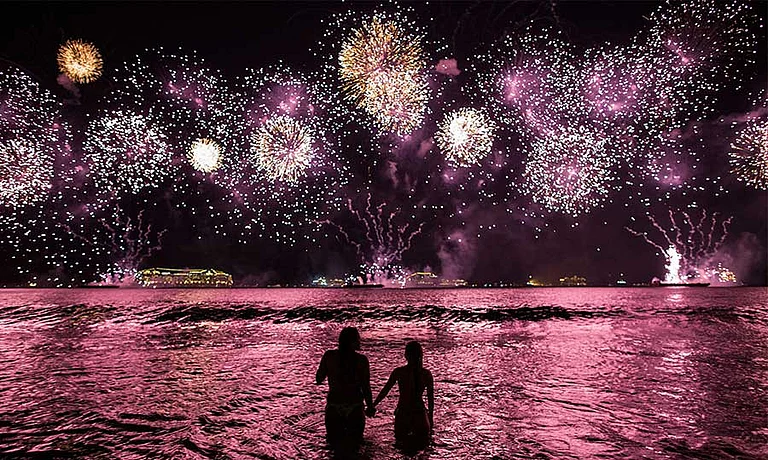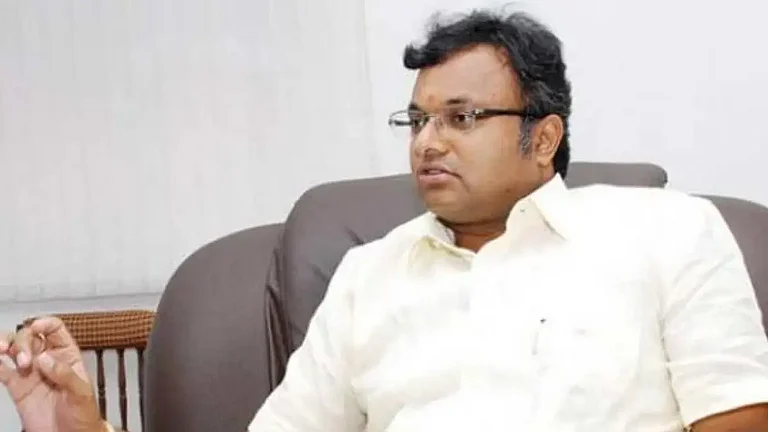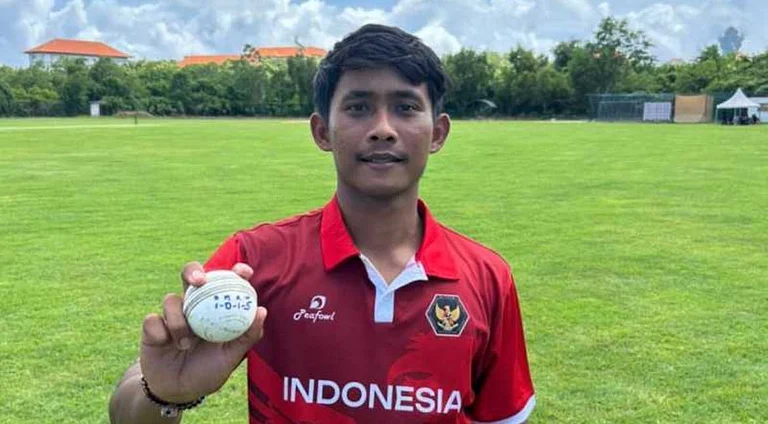A fearsome ghoul with bared fangs who gets his comeuppance in a riotous pratfall; ghosts of various types out to frighten humans, but who are scared witless by their own bugbears—fearful, frolicsome fun may apparently seem to be an oxymoron, but Bollywood appears to have learned the trick of splicing the opposites: making audiences tremble with fear and tickling their funny bones at the same time. Struggling to stay afloat after being devastated by the Coronavirus pandemic over the past year, the Hindi film industry has stumbled, in these hard times, on horror-comedies— a hybrid genre well established in Western cinema, but never explored to its full potential in Bollywood.
The heady concoction of horror and humour is the latest in-thing in B-town, where a new stable of film-makers is desperately looking for a potent formula to bring audiences back into theatres which, ironically, looked no better than ghost towns in post-lockdown.
What began as a trickle with the astounding success of the Rajkummar Rao-Shraddha Kapoor starrer Stree in 2018 has now become a gushing torrent, as leading banners showing a remarkable predilection for spooky tales spiked with laugh-out-loud moments. The success of Roohi, featuring Rao and Jahnvi Kapoor—the first mainstream B-town film to get a theatrical release post-lockdown on March 11—is all set to fuel further demand for horror-comedies. About a dozen movies of the same genre starring A-listers are being shot.
Has the horror movie, then, finally got its due in an industry where it was invariably dismissed as being too low-brow, even bordering on sleaze, to be taken seriously? Have the big stars, earlier loath to touch the subject, found it palatable suddenly? A cursory look at the number of projects currently under production is enough to indicate that horror, with a liberal splash of comedy, is no longer an anathema for film-makers. Given the audience’s response, it makes sharp business sense to induce frightened shrieks and evoke peals of laughter in equal measure in a dark auditorium. Scary but amusing!
Leading the pack of movie merchants betting big on horror-comedies is Dinesh Vijan, who produced both Stree and Roohi. Bhediya, his next film dabbling in the supernatural, starring Varun Dhawan and Kriti Sanon and directed by Amar Kaushik (Stree), is already on the floors. Its teaser shows Varun Dhawan transforming into a werewolf against the backdrop of a full moon. Prima facie, it’s a well-worn cliché plucked from Western cinema. Yet, it promises to be a fun ride perfectly in sync with the latest fad in Bollywood.
Dhawan and Sanon are not the only young stars from the current lot to have taken a frightful fancy for horror flicks. Kartik Aaryan’s Bhool Bhulaiyaa 2 opposite Kiara Advani will release this year. It is a remake of director Priyadarshan’s 2007 horror-comedy of the same name. Also expected to hit screens this year is Bhoot Police, a multi-starrer featuring Saif Ali Khan, Jacqueline Fernandez, Yami Gautam and Arjun Kapoor. It is helmed by Pawan Kripalani, who has proven expertise in handling supernatural thrillers like Ragini MMS (2011).
Indeed, a long line of movies flogging the genre is in the pipeline—Phone Bhoot, for example, starring Katrina Kaif opposite young turks such as Siddhant Chaturvedi and Ishaan Khatter and directed by Gurmmeet Singh (Mirzapur). Other gambols with horror and comedy are Rosie: The Saffron Chapter, which marks the debut of TV actress Shweta Tiwari’s daughter Palak Tiwari and Chhori, a remake of the Marathi horror adventure Lapachhapi (2016), with Nushrat Bharucha playing the lead. By now, the list is horrifyingly long.
According to trade experts, horror-comedies appear to be the best bet for the film industry, considering that the audiences seem to be fighting shy of returning to the theatres due to Covid fears. “Horror-comedy is a good ‘formula’, for the lack of any other word,” Roohi director Hardik Mehta tells Outlook. “In any case, only six to seven genres are left for film-makers to explore on the big screen now. The rest have shifted to OTT platforms.”
According to Mehta, who directed the acclaimed Kaamyaab last year, says that it is among the few genres that has a potential to seduce cineastes back to theatres. “Like lavishly mounted war movies, period dramas, adventure sagas, or mega action movies, horror-comedies are meant to be enjoyed on the big screen. If you have seen Roohi, you will know why none of us wanted to take it to any OTT platform,” he says. “Inside a dark auditorium, with proper sound effects and music, you can create an atmosphere to keep the audience on the edge of their seats. It cannot be replicated in home theatres. I am glad that we released Roohi in theatres, and it did good business.”
Mehta points out that horror and comedy have co-existed as separate genres for decades, but the two had never merged so seamlessly before. “Over the years we have been familiar with the tropes of a typical horror movie. If we saw the heroine in a bathtub, we instantly knew that blood would ooze out of the shower,” he says. “But the new horror movies tend to subvert such tropes by offering something unexpected and amusing. Now, the hero even falls for a witch, whose lone purpose was to frighten audiences.”
Though Mehta’s Roohi collected only about Rs 22 crore in its first two weeks, it performed far better than others in the field—John Abraham-Emraan Hashmi’s eagerly-awaited actioner, Mumbai Saga, Parineeti Chopra’s Saina and Yash Raj Films’ Sandeep Aur Pinky Faraar, which were all released in March. With theatres running only to half of their capacity in key territories such as Mumbai, Roohi’s collections were deemed creditable for a small-budget movie. Of course, it was nowhere close to the collections of Stree, which had minted about Rs 180 crore worldwide, but Roohi did pass muster and lured Covid-wary people back into theatres in good numbers.
Stree’s box-office success did set off a trend of horror-comedies, but it was not an altogether new concept even in Bollywood. In fact, five years before Stree’s release, Dinesh Vijan had co-produced Go Goa Gone (2013) with Saif Ali Khan—arguably the first zombie-comedy to have crept out of Hindi cinema’s hidden crypt. Even though it did not set cash counters on fire, Vijan returned to explore a horror-comedy when writers Raj Nidimoru and Krishna D.K. (The Family Man, 2020) narrated to him the story of Stree—inspired by a popular folk tale, Nale Ba (Come Tomorrow), from Karnataka. It is about a wandering spirit that knocks on the doors of a village at night.
Stree’s impressive showing at the turnstiles also underlined the fact that the makers of the new scare wave were not averse to taking inspiration from the indigenous sources, unlike in the past when most Indian horror movies were heavily influenced by Hollywood or European films. Even the Ramsay Brothers looked firmly westwards to spin their enjoyable, kitschy yarns. Incidentally, the Ramsay Brothers were the first to incorporate comic elements liberally in horror movies. It was primarily intended to give comic relief to audiences in between scary situations depicting all manner of hideous ghouls. Though such comic interludes were dismissed as being lewd by critics, audiences loyal to those movies loved them to distraction.
Film critic Murtaza Ali Khan takes note of the recent resurgence of horror-comedies. “Even before Stree we have witnessed successful horror comedies such as Bhool Bhulaiyaa, Bhoothnath, Bhoothnath Returns and Golmaal Again. There have also been some interesting genre experiments like Go Goa Gone,” he says.
“If one looks at the history of horror comedies as far as Hindi cinema is concerned, then one of the first films that come to mind is the 1965 classic Bhoot Bungla. Later, in the 1990s , Shah Rukh Khan’s Chamatkar (1992) and Salman Khan’s Hello Brother (1999) also deserve a mention,” he adds.
And yet, horror movies did not get their due. Shamya Dasgupta, who wrote Don’t Disturb the Dead: The Story of Ramsay Brothers, a loving and informative biography of Bollywood’s first family of horror flicks, says that horror movies and the actors working in them were always looked down upon by the media and critics. “The genre itself was thought of as lowbrow and unglamorous,” he says. “It was fine for critics to comment from an intellectual high ground, but you cannot say that the public was wrong to be entertained by such films. They may not have been intellectually stimulating for them but horror movies always had a market.”
According to Sengupta, the fact that the Ramsay Brothers continued to make movies for more than two-and-a-half-decades despite low profit margins proves that there was some logic behind their venture. “The late Tulsi Ramsay (who directed most of the Ramsay films with his brother Shyam) once told me that horror movies had only 20-25 per cent of the total Hindi film audience in those days,” he says. “They were like sex films, shunned by family audiences. Only groups of boys or men patronised them. Therefore, due to limited profit margins, such films were made on small budgets, though big stars of their time such as Shatrughan Sinha, Parveen Babi, Navin Nishchol did work in the Ramsay films.”
Pointing out that horror movies had always had a base in Hollywood and European cinema, Sengupta says that it became more mainstream in India when film-makers like Ram Gopal Varma and Vikram Bhatt started making films like Raat (1992) and Raaz (2002) in the post-liberalisation era, when audiences began to get, and thereby develop, a taste of sophisticated and well-shot psychological, paranormal thrillers, not merely stories about wandering ghosts, chudails (witches) and what have you. “Now, the scenario has changed and prominent actors are working in horror films,” he says.
Veritably, in recent years, horror flicks bolstered and garnished by comic elements have acquired, nay wrested, the respectability that had eluded the genre altogether in the past. Now even a mainstream big star like Ajay Devgn is co-producing a biopic of the legendary Ramsay Brothers. Could there be a better tribute from Bollywood towards the contribution of the siblings who carved a permanent niche for ghost-and-monster thrillers in the annals of Hindi cinema? Those unhappy, tortured souls forever condemned to haunt the hapless victims in the Ramsay movies would happily gorge at the surfeit on offer now in cinemas. If you’re touched with a sixth sense, you, too, can feel their spectral presence.


























